.
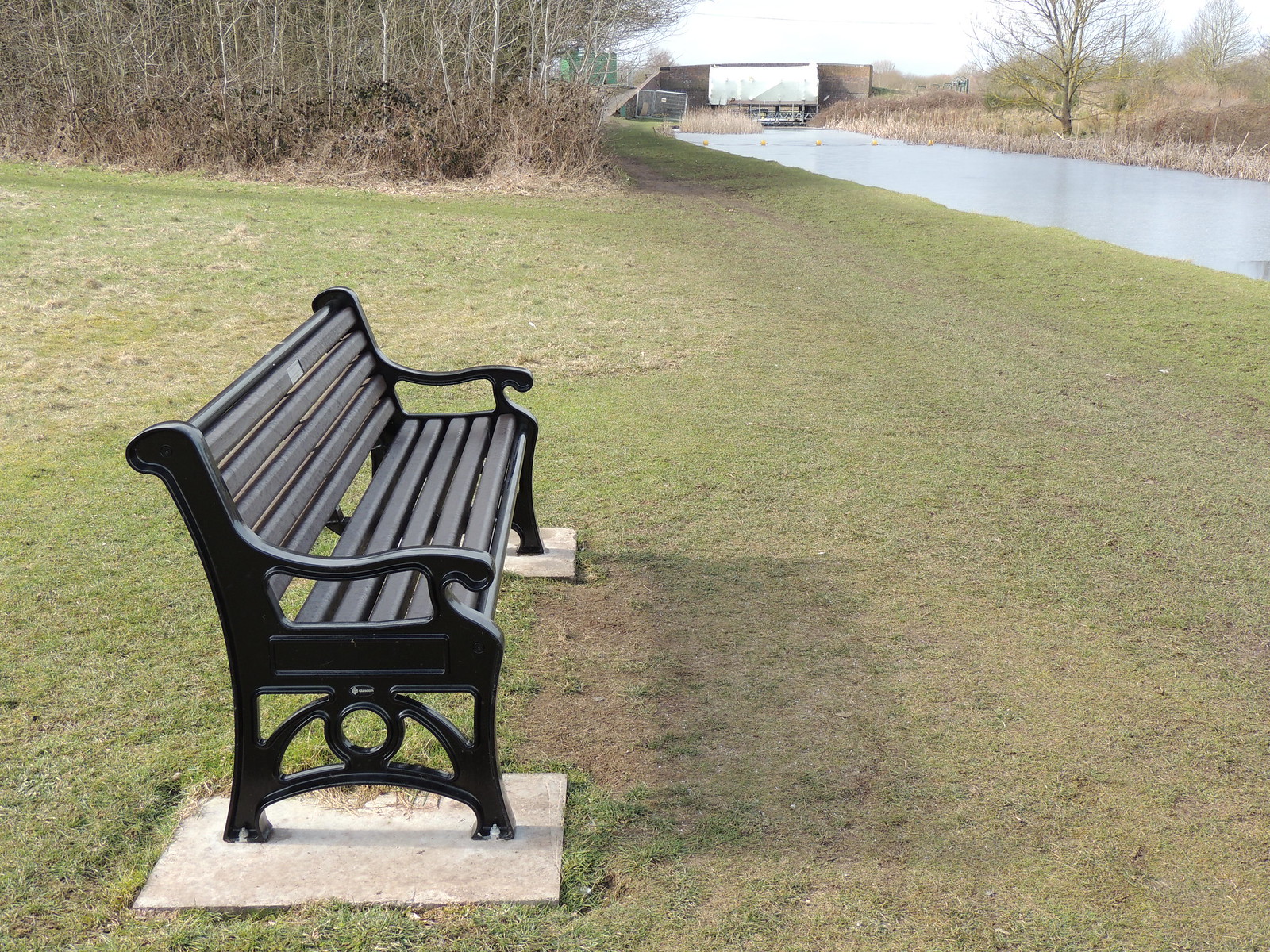
Here, (HA!) breath comes

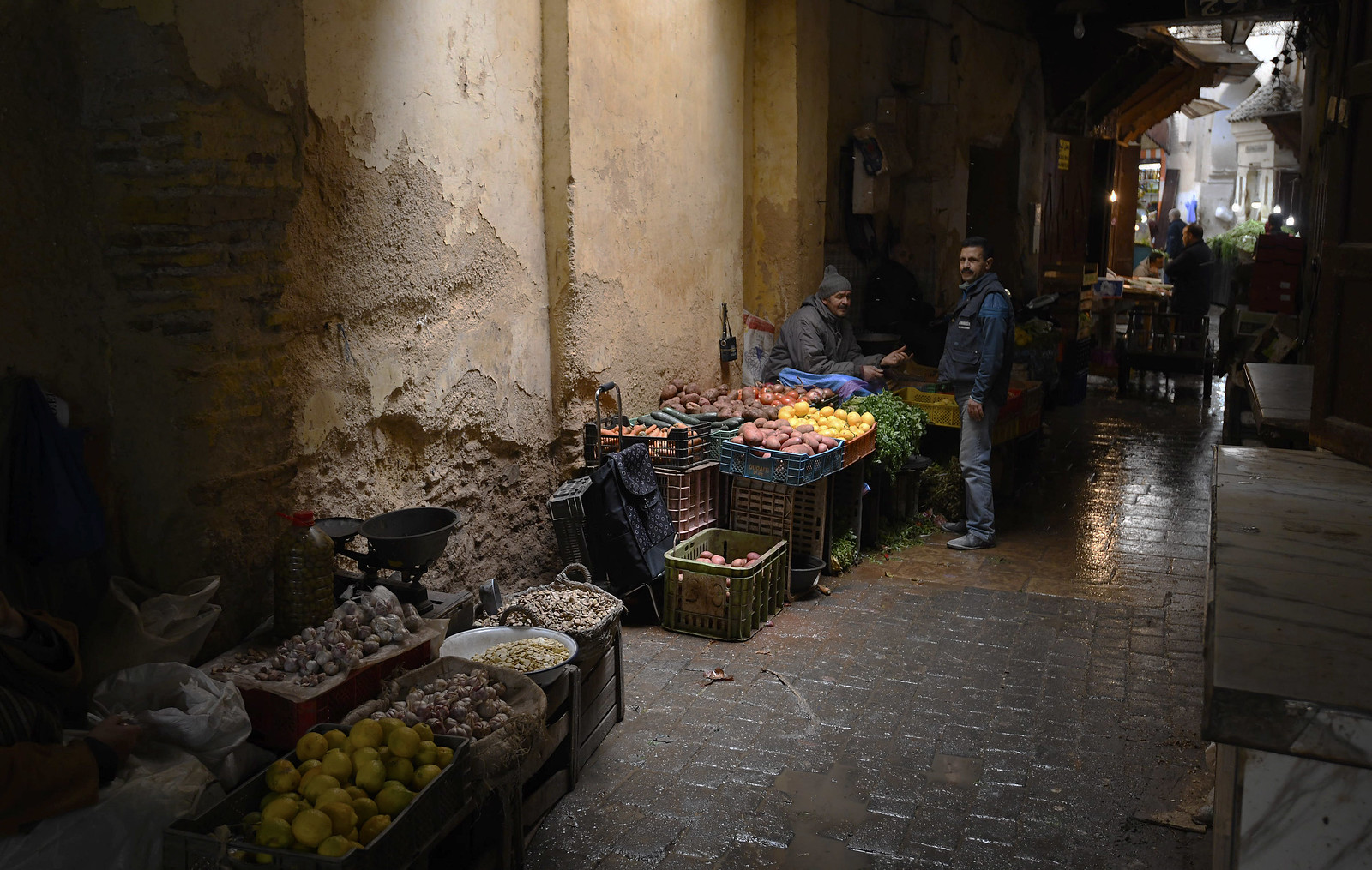
Fés - narrow alley [Fés-el-Bali, Morocco]: photo by Charles Bastian, 7 March 2018

Fés - narrow alley [Fés-el-Bali, Morocco]: photo by Charles Bastian, 7 March 2018
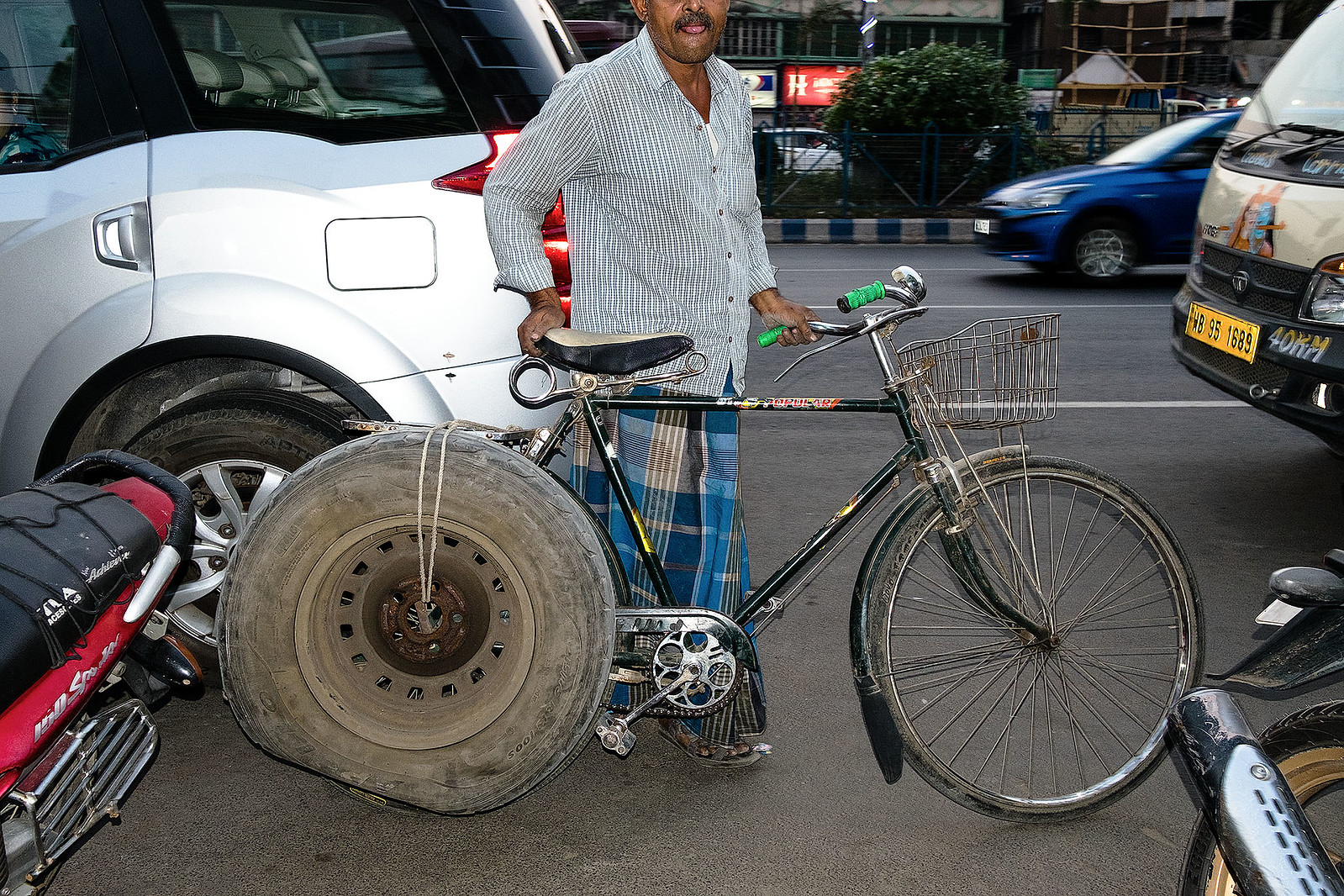


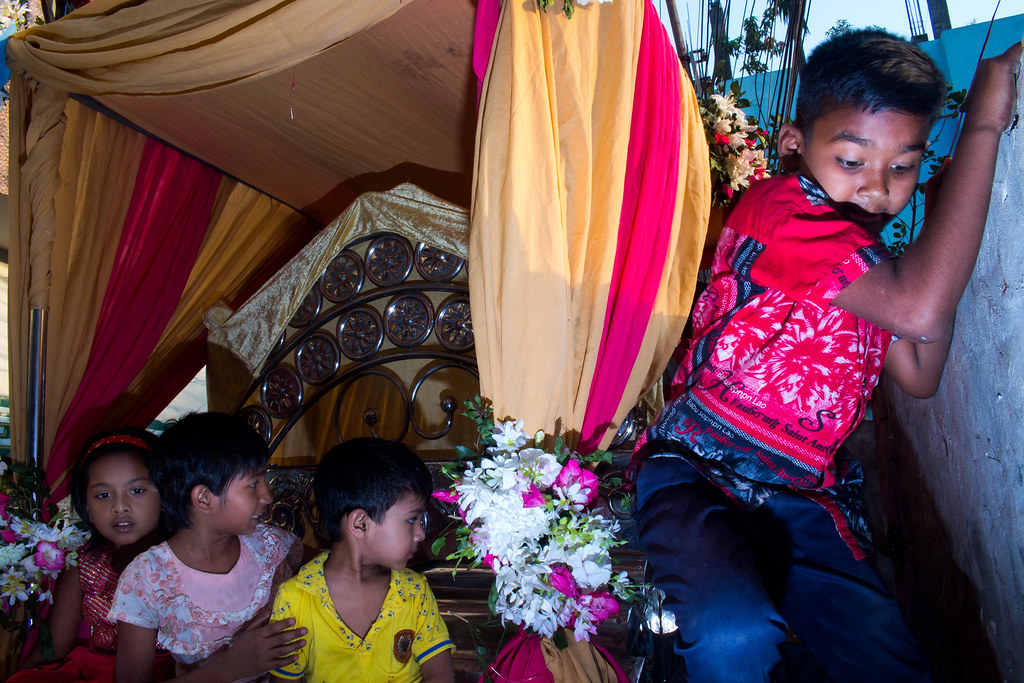
#01 [Dhaka]: photo by Sohail Bin Mohammad, 8 March 2018
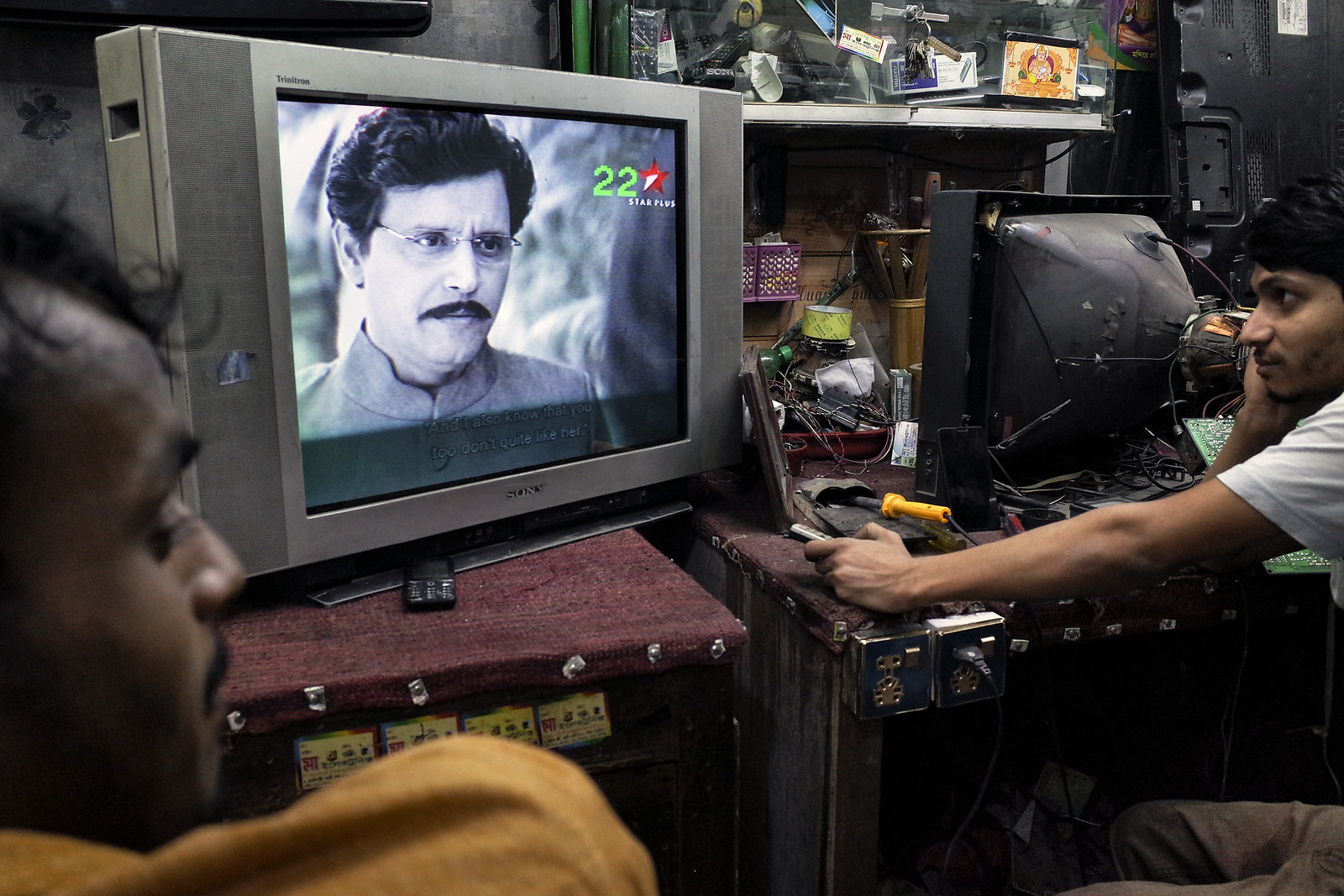


#2 [Dhaka]: photo by pratyay, 16 March 2018


Dhaka floods throughout the monsoon season.: photo by Munir Uz Zaman/AFP/Getty Images via The Guardian, 21 March 2018
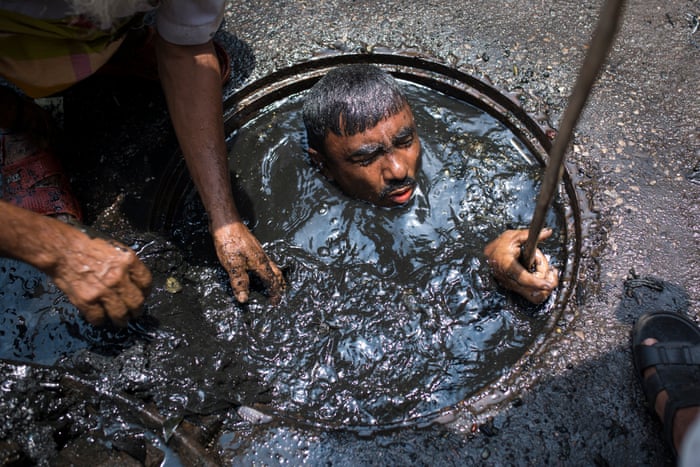

Dhaka is one of the most crowded cities in the world.: photo by Mohammad Ponir Hossain/Reuters via The Guardian, 21 March 2018
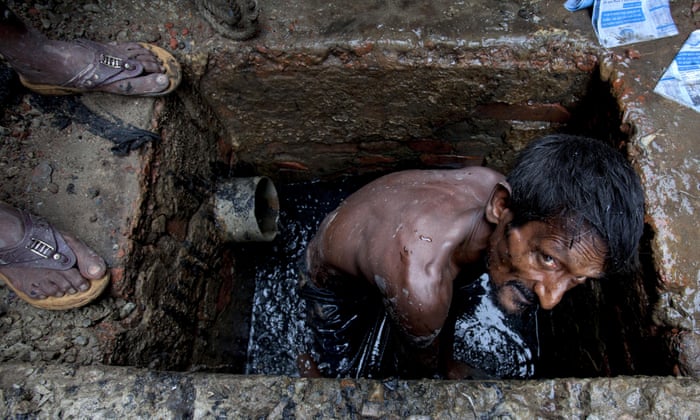
Cleaning sewers has been described as the world’s worst job.: photo by KM Asad/Zuma Wire/Rex/Shutterstock via The Guardian, 21 March 2018

A Bangladeshi woman holds a glass of contaminated water in Dhaka.: photo by NurPhoto/Getty Images via The Guardian, 21 March 2018
Sujon says his community is shunned by both Muslims and Hindus. “Nobody comes to hear our plight, not even local journalists,” he says. His daughters conceal their origins even from their friends. “Our children can go to school, but they must hide their background and real identity to avoid being ostracised and humiliated,” he says.
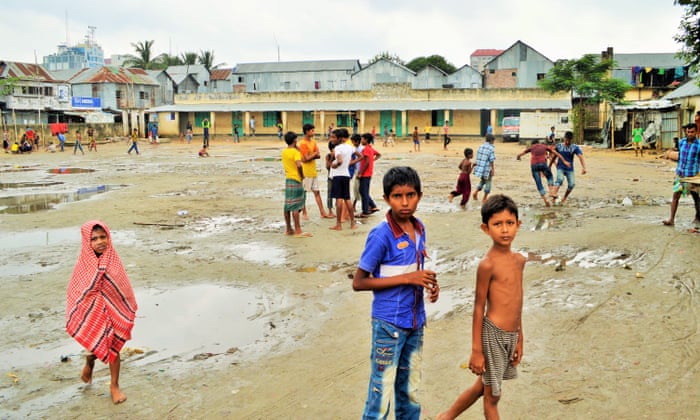
The Korail area of Dhaka.: photo by Poppy McPherson via The Guardian, 1 December 2015
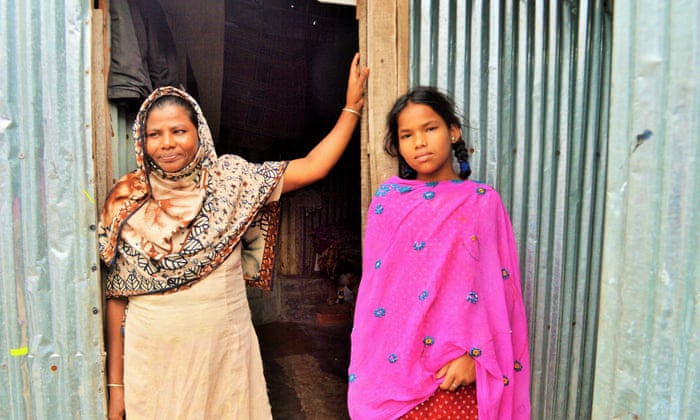
Parul Akter and her daughter in Dhaka’s Korail slum.: photo by Poppy McPherson via The Guardian, 1 December 2015
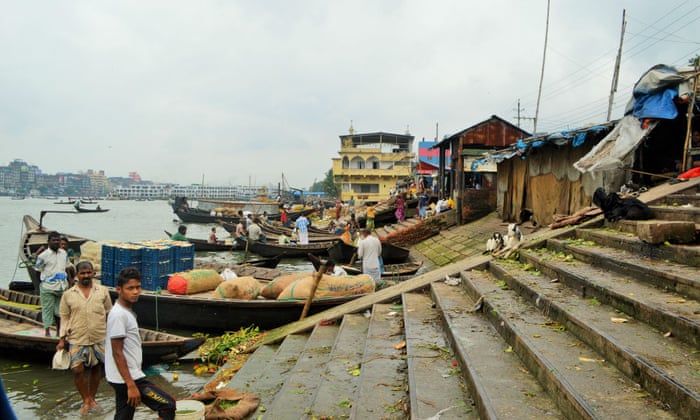
The banks of Dhaka’s Buriganga River.: photo by Poppy McPherson via The Guardian, 1 December 2015
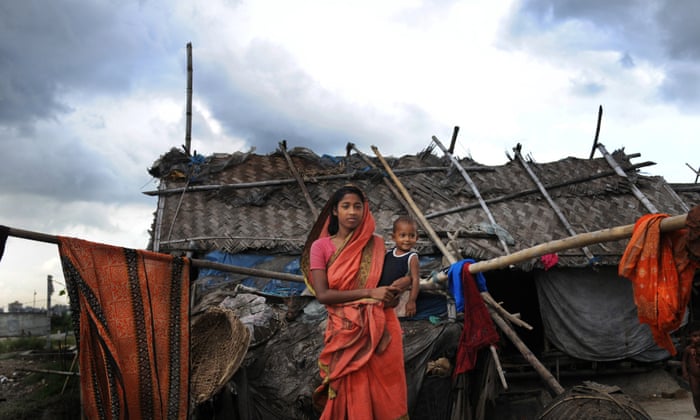
Suriya Begum, an 18-year-old who moved to a slum in Dhaka from the southern coast in search of a better life.: photo by Munir Uz Zaman/AFP via the Guardian, 1 December 2015
In yet another irony, even though Dhaka is prone to flooding, it is also running dry. About 90% of the city’s water supplies come from ground reserves, which are depleted by three metres a year. There’s a supply-demand gap of 500m litres a day, according to a 2014 report, leading to chronic shortages and protests in the summer months.
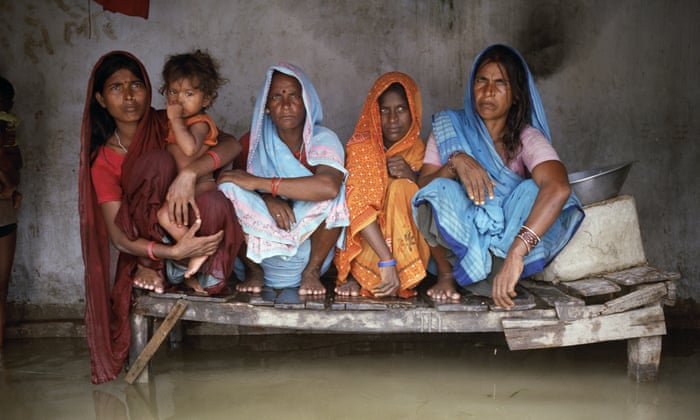
Members of the Devi family sit on a bed above floodwaters in the village of Chajan Mania.: photo by Gideon Mendel/Corbis via the Guardian, 1 December 2015
Bangladeshi pedestrians cross an iron bridge as smoke rises from a garbage dump fire below, by Munir Uz Zaman: image via AFP Photo @AFPphoto, 12 June 2017
Down by the Atmospheric River

Wyrley and Essington Canal W275-010. | The
Wyrley and Essington Canal (that is currently in water) runs
between Brownhills and Wolverhampton in the West Midlands of England.
Memorial bench ---- "In Loving Memory of Clive Michael Ault 17.1.44 – 6.1.17 | Husband – Father – Grandfather – Brother – Councillor – Friend | He will be missed by all" | Looking west to Pelsall Works Bridge: photo by touluru, 26 February 2018
Wooden Boy: Common
Here, (HA!) breath comes
Earth arc
plain
in pool
in pool
Arc broke
Beasts err
We be burdens burdens’ glow
A now ohs
forhowever
Ah!
long gone
long gone
There are
flowers
NO you don’t
know
a THING
Wooden Boy: Common, from The Little Wooden Boy, 2 February 2018

Wyrley and Essington Canal W270-027. | The
Wyrley and Essington Canal (that is currently in water) runs
between Brownhills and Wolverhampton in the West Midlands of England.
Memorial bench ---- In Loving Memory of Stephen White 'Pinky' |"You're
Here For A Good Time | Not A Long Time" |11-06-1956 To 31-03-2014: photo by touluru, 26 February 2018

Da que pensar "en que mundo vivimos": photo by 3rp@co, 27 February 2018
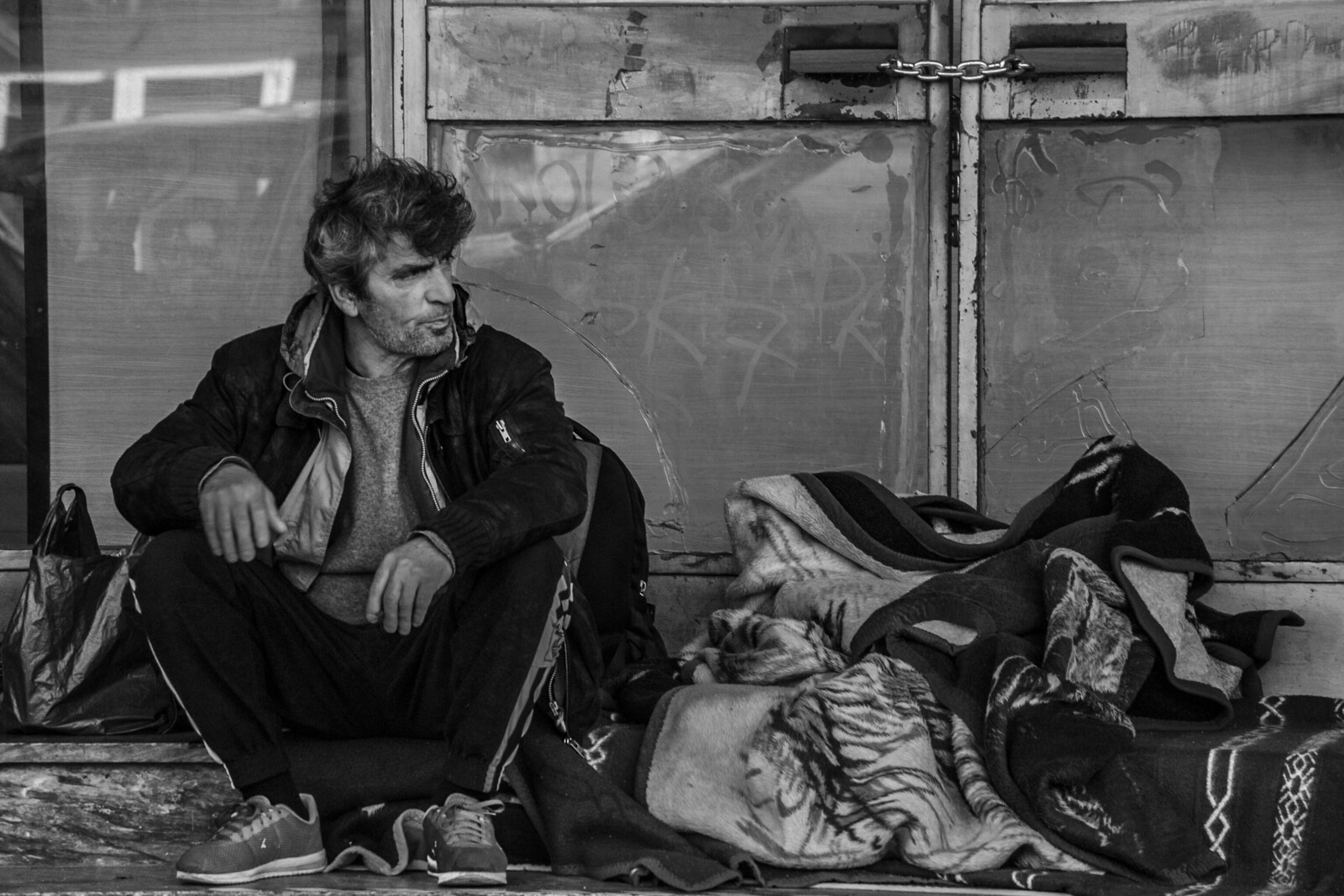
Sem abrigo (Homeless) [Portugal]: photo by A. Paulo C. M. Oliveira, 10 March 2018

Sem abrigo (Homeless) [Portugal]: photo by A. Paulo C. M. Oliveira, 10 March 2018

Sem abrigo (Homeless) [Portugal]: photo by A. Paulo C. M. Oliveira, 10 March 2018

Children of refugees [Tel Aviv]: photo by Very_Sprng, 10 March 2018

Children of refugees [Tel Aviv]: photo by Very_Sprng, 10 March 2018


ML_CardiffBirmingham_180310 | CARDIFF, UNITED KINGDOM. March 10 2018. Football match between Cardiff City and Birmingham City in the Sky Bet EFL Championship. Final score at the Cardiff City Stadium, Cardiff City 3-2 Birmingham City. ©Photo Matthew Lofthouse - Freelance Photographer: photo by Lofthouse_Matty, 2 March 2018

Fés - narrow alley [Fés-el-Bali, Morocco]: photo by Charles Bastian, 7 March 2018

Da que pensar "en que mundo vivimos": photo by 3rp@co, 27 February 2018

Sem abrigo (Homeless) [Portugal]: photo by A. Paulo C. M. Oliveira, 10 March 2018

Sem abrigo (Homeless) [Portugal]: photo by A. Paulo C. M. Oliveira, 10 March 2018

Sem abrigo (Homeless) [Portugal]: photo by A. Paulo C. M. Oliveira, 10 March 2018

Children of refugees [Tel Aviv]: photo by Very_Sprng, 10 March 2018

Children of refugees [Tel Aviv]: photo by Very_Sprng, 10 March 2018


ML_CardiffBirmingham_180310 | CARDIFF, UNITED KINGDOM. March 10 2018. Football match between Cardiff City and Birmingham City in the Sky Bet EFL Championship. Final score at the Cardiff City Stadium, Cardiff City 3-2 Birmingham City. ©Photo Matthew Lofthouse - Freelance Photographer: photo by Lofthouse_Matty, 2 March 2018

Fés - narrow alley [Fés-el-Bali, Morocco]: photo by Charles Bastian, 7 March 2018

Fés - narrow alley [Fés-el-Bali, Morocco]: photo by Charles Bastian, 7 March 2018

Fés - narrow alley [Fés-el-Bali, Morocco]: photo by Charles Bastian, 7 March 2018


Untitled: photo by Soumyendra Saha, 21 March 2018


#01 [Dhaka]: photo by Sohail Bin Mohammad, 8 March 2018



#2 [Dhaka]: photo by pratyay, 16 March 2018
In the megacity: The worst job in the world

The sewerage system is so poor in Dhaka that it often overflows during monsoon season.: photo by NurPhoto/Getty Images via The Guardian, 21 March 2018
The dysfunctional megacity: why Dhaka is bursting at the sewers: Cities can be dense without being overpopulated. But in the world’s most crowded city, the drains can’t cope – creating a grim new job: Poppy McPherson in Dhaka for The Guardian,
After
decades cleaning the sewers of Dhaka, Bangladesh’s crowded capital,
Sujon Lal Routh has seen plenty of misery. But the tragedy of 2008 was
the worst. After a day of heavy rainfall left the streets flooded – as
usual – seven workers were assigned to clear a blocked manhole in
Rampura, in the centre of the city. Normally, cleaners cling to ropes to
stop them getting sucked in by surging water when they clear blockages.
But this group were new to the job. “They didn’t know about the
impending danger or how to work in that situation,” says Sujon. “So,
sewer water swallowed them.”
Bystanders smashed the road open with hammers and shovels.
Eventually, they dragged out three workers, dead. Another four were
seriously injured; one later died in hospital. “The accident instilled
fear in us, and for months we were even afraid to look into the sewers,”
says Sujon.
During Bangladesh’s relentless monsoon season, Dhaka is submerged
several times a month. The overburdened drains clog and the low-lying
city fills with water like a bathtub. Newspapers such as the Dhaka Tribune
bemoan the inundation with pictures of flooded buses and quotes from
peeved commuters and despondent urban experts: “Dhaka underwater again”;
“It’s the same old story.”

Dhaka floods throughout the monsoon season.: photo by Munir Uz Zaman/AFP/Getty Images via The Guardian, 21 March 2018
On
the sides of the roads, in the blinding rain, the ragtag army of
sewer cleaners goes to work. Some poke bamboo sticks into the manholes.
Others are plunged, half-naked, into the liquid filth and forced to
scoop out the sludge with their bare hands. "The world's worst job",
global media declared last year after pictures of the workers neck-deep
in waste went viral.
According to UN Habitat,
Dhaka is the world’s most crowded city. With more than 44,500 people
sharing each square kilometre of space, and more migrating in from rural
areas every day, the capital is literally bursting at the seams – and
the sewers. The cleaners, who make about £225 per month, risk their
health and their lives to prop up infrastructure that is groaning under
the weight of the population.
Overpopulation is usually defined as the state of having more people
in one place that can live there comfortably, or more than the resources
available can cater for. By that measure, Dhaka is a textbook example.
“There are cities bigger in size than Dhaka in the world,” says Prof
Nurun Nabi, project director at the department of population sciences at
the University of Dhaka (“They call me Population Man. Like Superman,” he says). “But if you talk in terms of the
characteristics and nature of the city, Dhaka is the fastest growing
megacity in the world, in terms of population size.”
Cities can be densely populated without being overpopulated.
Singapore, a small island, has a high population density – about 10,200
per sq km – but few people would call it overpopulated. The city has
grown upwards to accommodate its residents in high-rises, some with
rooftop “sky-gardens” and running tracks.
Overpopulation happens when a city grows faster than it can be managed.

A sewer cleaner in Dhaka.: photo by Zakir Chowdhury/Barcroft Images via The Guardian, 21 March 2018
“The
government has been trying to manage Dhaka city well, but has not been
as successful as expected,” says Sujon, the sewer cleaner, over a creamy
cup of cha, Bangladeshi tea, in the modest flat he shares with
his family in bustling central Dhaka. Outside, painted rickshaws tinkle
through narrow, waterlogged streets.
While Bangladesh is majority Muslim, like many in his profession,
Sujon is Hindu. Hindus were singled out for persecution during the
country’s war for independence from Pakistan and remain subject to
discrimination. He is also a dalit,
belonging to the caste known throughout south Asia as “untouchables” and
consigned to menial jobs. In Bangladesh, they are called by the
derogatory term methor – “those who clean shit”.
“I have inherited this from my forefathers and have no other work
skills,” says Sujon, who is tall and in his early 40s, with a long, thin
face and neat moustache. “I have a family to maintain, children to
offer education and monthly bills to pay, including rent. I’m forced to
do this job, although I know it brings me disrespect and disgrace.”
It is thankless, dangerous work. A friend of Sujon’s was killed when a
septic tank he was cleaning exploded. Recently, Sujon’s brother,
Sushil, had to hang on to a leaking gas pipeline while trying to clear a
10-foot-deep manhole. “If we had a washer or pump machine, the risk
could be reduced,” he says. “We could use the pump to dry up the manhole
before going down to clear it up. Also, we need to have a ladder to go
down. But we just get an order to get the work done, so we manage people
and try to finish it as quickly as possible.”

Dhaka is one of the most crowded cities in the world.: photo by Mohammad Ponir Hossain/Reuters via The Guardian, 21 March 2018
Then there are the health effects. Sujon blames a mysterious skin rash on the hours spent submerged.
“The sewerage lines are acidic and poisonous due to rotten filth,” he
says. “So cleaners are 100% sure to have health problems, especially
skin problems. Often they don’t realise it at all. They’ll buy and drink
some local liquor, feel dizzy and fall asleep. They’ll be out of this
world by then. If they had their senses they would realise the damage
being done slowly.”
To
live in Dhaka is to suffer, to varying degrees. The poor are crammed
into sprawling shantytowns, where communicable diseases fester and fires
sporadically raze homes. Slum-dwellers make up around 40% of the population. The middle and upper classes
spend much of their time stuck in interminable traffic jams. The capital
regularly tops “least liveable cities” rankings. This year it sat
behind Lagos, Nigeria, and the capitals of war-ravaged Libya and Syria.
And that’s an improvement, jokes Nabi during an interview at his
office at the University of Dhaka, whose lush tropical grounds provide
the city with rare green space. Like many Bangladeshi academics
grappling with the host of crises bearing down on the country, Nabi
treats his subject matter with a mix of wry humour and optimism. “In the
rankings, for a couple of years, we were No 1,” he says.
It wasn’t always like this. In the 1960s, before Bangladesh won
independence from Pakistan in 1971, Nabi recalls, it was possible to
drive down empty roads in Dhaka. People bathed in Mughal-era
canals in the old part of the city, which is still home to
centuries-old architecture, although much has been razed in pursuit of
development. The canals have been filled in, cutting off a vital source
of drainage.
Like much of the world, Bangladesh
has undergone rapid, unplanned urbanisation. The economic opportunities
conferred by globalisation, as well as climate-induced disasters in
rural and coastal areas, have driven millions to seek better fortune in
the capital, putting a strain on resources. “We can see a huge avalanche
coming towards the city from the rural areas,” says Nabi. “People are
pouring, pouring, pouring in. Do we have the housing infrastructure to
accommodate them? Where are the facilities for poor people to live?”
Bangladesh’s reluctance to decentralise and invest in cities beyond
Dhaka has compounded the problem, he says. “You go to India, just the
neighbouring country, you will find Kolkata, Mumbai, Chennai, Hyderabad,
so many cities where you can live,” says Nabi. “You can survive. Here,
we only have Dhaka still.”

Cleaning sewers has been described as the world’s worst job.: photo by KM Asad/Zuma Wire/Rex/Shutterstock via The Guardian, 21 March 2018
For most of modern history, cities grew out of wealth. Even in more
recently developed countries, such as China and Korea, the flight
towards cities has largely been in line with income growth. But recent
decades have brought a global trend for “poor-country urbanisation”, in
the words of Harvard University economist Edward Glaeser, with the proliferation of low-income megacities.
According to Glaeser’s research,
in 1960 most countries with a per capita income of less than $1,000 had
urbanisation rates of under 10%. By 2011, the urbanisation rate of less
developed countries stood at 47%.
In other words, urbanisation has outpaced development, resulting in
the creation of teeming but dysfunctional megacities such as Lagos, Karachi, Kinshasa and Dhaka.
Dense urban populations, Glaeser writes, bring benefits such as
social and creative movements as well as scourges like disease and
congestion. “Almost all of these problems can be solved by competent
governments with enough money,” he writes. In ancient Rome, Julius
Caesar successfully fought traffic by introducing a daytime ban on the
driving of carts in the city. Baghdad and Kaifeng, China, meanwhile,
were renowned for their waterworks. “These places didn’t have wealth,
but they did have a competent public sector,” writes Glaeser.
In much of the developing world today, both are in short supply.
In
Dhaka, management of the city falls to a chaotic mix of competing
bodies. “The lack of coordination between government agencies that
provide services is one of the major obstacles,” says Nabi.
Seven different government departments – including two separate
mayors – are working to combat waterlogging, an arrangement that has led
to a farcical game of buck-passing. In July, mayor of south Dhaka
Sayeed Khokon stood knee-deep in water and said
the Water Supply and Sewage Authority (Wasa) was liable but could not
“be seen much at work”.
Wasa
subsequently blamed Khokon. Elsewhere,
north Dhaka’s late mayor Annisul Huq, also visiting waterlogged areas,
turned to a reporter in exasperation and asked: “Someone tell me what is
the solution?”
Taqsem Khan, Wasa’s managing director, says that, since natural
sources of drainage are scarce, the government has to pump water out of
the city through several thousand kilometres of pipeline laid across the
city.
“The reason why there is water congestion in Dhaka city is because
it’s a megacity – its population growth is too high,” he says. “Wasa
once worked for six million people, but today there are about 15 million
people … That is the reason why the natural water bodies and water
drainage systems have been destroyed and housing has been built up.”
In 2013, the city signed a deal to dredge some of the canals –
following the example of Sylhet, another Bangladeshi city suffering from
waterlogging – but there has been little sign of progress.

A Bangladeshi woman holds a glass of contaminated water in Dhaka.: photo by NurPhoto/Getty Images via The Guardian, 21 March 2018
But dysfunctional administrations have not always been an obstacle to
getting things done in Bangladesh. The country has won praise for its
adaptation-focused response to climate change.
And some urbanists are rethinking the prevailing negative view of slums, while urbanisation – which tends to bring declining birth rates – can be a partial solution to overpopulation.
Glaeser points out that social movements formed in the confines of
urban areas can have the power to change and discipline governments.
“Many stories will be written by the people of this nation – forget
about the political parties,” says Nabi. “Someday they will wake up and
be forced to comply with their speech.”
In the meantime, however, the unchanged misery of the sewer cleaners
serves as a reminder that, as cities grow, they tend to get more unequal.
Sujon says his community is shunned by both Muslims and Hindus. “Nobody comes to hear our plight, not even local journalists,” he says. His daughters conceal their origins even from their friends. “Our children can go to school, but they must hide their background and real identity to avoid being ostracised and humiliated,” he says.
“The whole system is against us, against our progress and our
development. Bangladesh gained independence in 1971, but our community’s
conditions remain the same.”

The Korail area of Dhaka.: photo by Poppy McPherson via The Guardian, 1 December 2015
Dhaka: the city where climate refugees are already a reality: Poppy McPherson in Dhaka for The Guardian, 1 December 2015
Every day, another 2,000 people move to the Bangladeshi capital. It’s
nothing new – for generations Dhaka has been a magnet for those
escaping rural poverty – but now climate change is accelerating the race
to the city
Parul Akter travelled across Bangladesh to escape the flood waters, but they seem to have followed her. The shack she shares with her husband and four children in Dhaka, the nation’s capital, sits on the edge of the sprawling Korail slum – next to a lake. When it rains, dank water sloshes into their shelter. Only the bed, raised up on bricks, stays dry.
Parul Akter travelled across Bangladesh to escape the flood waters, but they seem to have followed her. The shack she shares with her husband and four children in Dhaka, the nation’s capital, sits on the edge of the sprawling Korail slum – next to a lake. When it rains, dank water sloshes into their shelter. Only the bed, raised up on bricks, stays dry.
“This room is all we have, so
we need to stay here no matter what happens,” said Akter.
Seven years ago, a monsoon flood left nothing standing in their
village, located in Bhola on the country’s south-west coast. “We had no
option but to climb up the banks with our belongings immediately,” said
Akter. “Within a week, we moved to Dhaka to start a new life.”
Every day, some 2,000 people settle in the Bangladeshi capital. It’s nothing new – for
generations the city has been a magnet for men and women escaping rural
poverty. But now there’s another driver that experts say has accelerated
the race to the capital: the Earth’s changing climate, which has
already made life extremely difficult in stretches of this pancake-flat
country threaded with rivers.
In the coming decades, millions more
“climate refugees” around the world are expected to make similar
journeys. In a cruel irony, many will wind up in cities even more
ill-equipped to withstand the changing climate.

Parul Akter and her daughter in Dhaka’s Korail slum.: photo by Poppy McPherson via The Guardian, 1 December 2015
Bangladesh contributes just 0.4 metric
tonnes per capita to the carbon emissions fuelling climate change (the
US produces 17 and the UK 7.1), but will suffer its effects badly.
Within three decades, the country is expected to be at least 2C hotter. By 2080, the seas could be 2ft higher.
The glaciers in the Himalayas will melt faster,
sending more floodwaters to batter the Bay of Bengal. Cyclones will
wrack the coast more frequently, and with more intensity. Salty seawater
will pollute drinking supplies. Fertile land will be destroyed.
In a cruel irony, many refugees will wind up in cities even more ill-equipped to withstand the changing climate
Some
of this is already happening. There have not been many studies
indisputably tying Bangladesh’s rural exodus to climate. But research
indicates that the majority of migrants hail from coastal areas that
are already experiencing rising sea levels, increased salinity,
destructive floods and cyclones. At least 400,000 people move to Dhaka
every year, according to the World Bank, while the International
Organisation for Migration (IOM) estimates that 70% of Dhaka’s
slum-dwellers moved there fleeing some sort of environmental shock.
In 2012, A S Moniruzzaman Khan, the director of the Centre for
Climate Change and Environmental Research at BRAC University, tracked
1,500 families migrating to cities, mostly Dhaka.
Almost all cited the changing environment as the biggest reason for
their decision. They were struggling to find fresh water to drink, as
rising seas spilled into rivers.
“Ten years back, the area was freshwater – now it is not,” Khan
said. He heard of women and children having to walk an extra five hours
each day to find clean water. The task was considered too dangerous, so
men went instead – taking a sizeable chunk out of the earnings of the
family’s main breadwinner. “If you provide water, this migration issue
would probably never come,” said Khan.

The banks of Dhaka’s Buriganga River.: photo by Poppy McPherson via The Guardian, 1 December 2015
It’s
not just Bangladesh. All over the world, people are or will be on the
move – in Africa, largely due to drought; in Asia, floods. By 2060,
there could be between 25 million and 1 billion environmental migrants.
And cities will be their primary destination. Foresight,
a UK government research body, says that by 2060 there will be 192
million more people living in vulnerable urban coastal floodplains,
mainly in Asia.
“Those moving to water-stressed or low-lying coastal cities in
developing countries may paradoxically find themselves exposed to
greater climate-change related risks,” a 2014 report by IOM reads.
Part of the problem is population. Asia’s megacities show no signs
of shrinking, even as rising sea levels render them more vulnerable to
storm surges.
A 2011 study of the 20 most populous cities expected to be exposed to coastal
flooding by 2070 placed Dhaka third, behind Mumbai and Calcutta. Also in
the top 10 are Guangzhou, Ho Chi Min City, Shanghai, Bangkok and
Yangon. Miami is the only city in a developed country to feature on the
list.
But despite the challenges, solutions for environmental migrants
rarely feature on urban development plans.
Climate refugees still have
no legal standing under international law. No binding global agreements
contain provisions for them, despite the first assessment report by the
Intergovernmental Panel on Climate Change in 1990 suggesting that “the
gravest effects of climate change may be those on human migration”.
Specialists had hoped that the climate talks in Paris starting on 30
November would persuade countries to prioritise the issue. But
environmental migration has reportedly been removed from the final agenda, though it could be reintroduced during negotiations.

Suriya Begum, an 18-year-old who moved to a slum in Dhaka from the southern coast in search of a better life.: photo by Munir Uz Zaman/AFP via the Guardian, 1 December 2015
In Dhaka, meanwhile, a teeming megacity of more than 15 million
people packed into a 325 sq km radius, the climate refugees are finding a
city where everything is clogged – from roads and pavements to rivers
and drains.
The slums, already home to hundreds of thousands, are expanding
rapidly. Within two decades, the city’s population could double to 30
million.
Within three decades, Bangladesh is expected to be at least 2C hotter. By 2080, the seas could be 2ft higher
“Every boat has a carrying capacity, every city has a carrying
capacity,” said Sarder Shafiqul Alam, a senior researcher at the
International Centre for Climate Change and Development and Bangladesh’s
representative at the Rockefeller Foundation’s Asian Climate Change
Resilience Network. “If that carrying capacity is over-burdened and
over-burdened, what will happen? Boat will capsize. City will do
something like that.”
People coming to Dhaka after environmental disasters face more
problems, he said. “They’re not getting enough safe water to drink;
they’re not getting sanitation facilities.”
In yet another irony, even though Dhaka is prone to flooding, it is also running dry. About 90% of the city’s water supplies come from ground reserves, which are depleted by three metres a year. There’s a supply-demand gap of 500m litres a day, according to a 2014 report, leading to chronic shortages and protests in the summer months.

Members of the Devi family sit on a bed above floodwaters in the village of Chajan Mania.: photo by Gideon Mendel/Corbis via the Guardian, 1 December 2015
Long-term groundwater depletion causes the earth to sink, which
exacerbates flooding, a major problem in Dhaka. It can also lead to the
intrusion of salty water into the supply – the same problem that contributes to rural-urban migration.
On the face of it, climate change is poised to be the latest disaster
to cripple Bangladesh, a nation that has been beset by compounding
crises since it was founded in 1971.
But Bangladeshis are accustomed to bouncing back. Or, as Khan puts it: “Our people like to face challenges.”
The country boasts the world’s largest non-profit, BRAC, and is the
birthplace of micro-finance, thanks to Nobel Laureate Muhammad Yunus.
Armies of field workers have responded to climate challenges with
innovation. Farmers whose salt-washed land is unfit to grow regular rice
have turned to salt-tolerant strains, or raised shrimp instead. And
there has been a concerted effort to persuade villagers not to leave
their homes.
Some people argue, however, that environmental migrants have a legal
claim to be resettled on public land. S M Mahmudul Hasan, 55, a
community leader at Korail, has an encyclopedic knowledge of the
residents, mostly families who migrated from places such as Bhola and
Barial.
“They have lost their houses in natural disasters and have had no income in the villages,” he said.
Most now eke out a living as street sweepers, rickshaw drivers and
domestic workers in slums where they face the constant threat of
eviction. They miss the countryside.
“Life in the village was good,”
said Helena Akter, whose home in Barisal was swallowed by the river. “We
had land to cultivate and our family lived happy all year round. In
Dhaka, we struggle for survival.” But, she adds, “It feels good to be in
Dhaka. Although we are poor, we don’t need to be afraid of losing our
house in the river any more.”
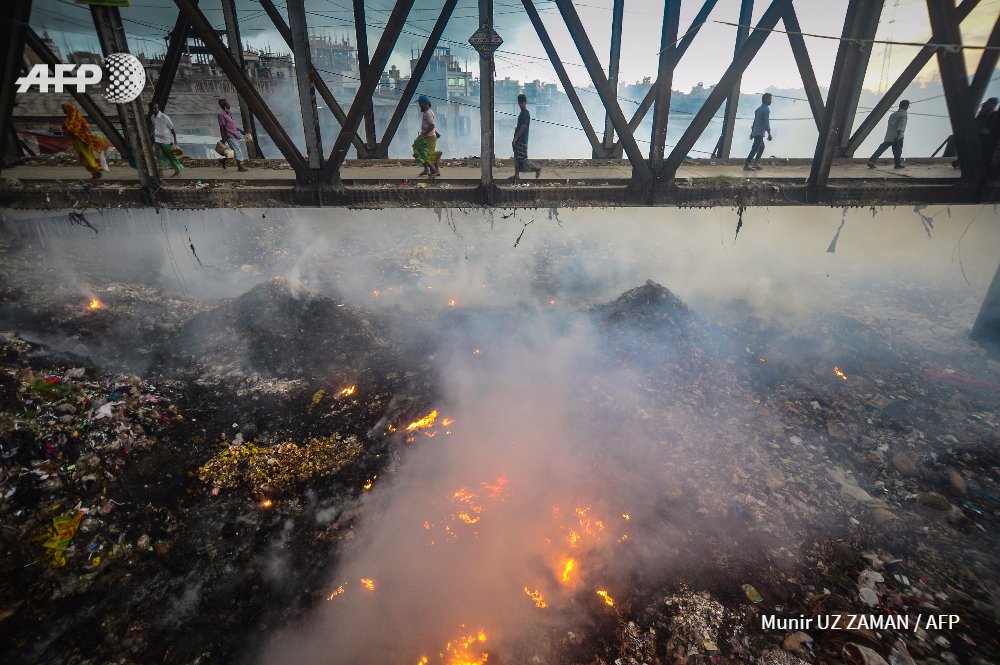

Bangladeshi pedestrians cross an iron bridge as smoke rises from a garbage dump fire below, by Munir Uz Zaman: image via AFP Photo @AFPphoto, 12 June 2017
Down by the Atmospheric River

Authorities ordered about 2,400 #Ventura County residents to flee their homes Tuesday afternoon as a massive #storm lumbered out of the eastern Pacific Ocean and headed towards #SouthernCalifornia: image via luis sinco @luissinco, 11:01 PM 20 March 2018
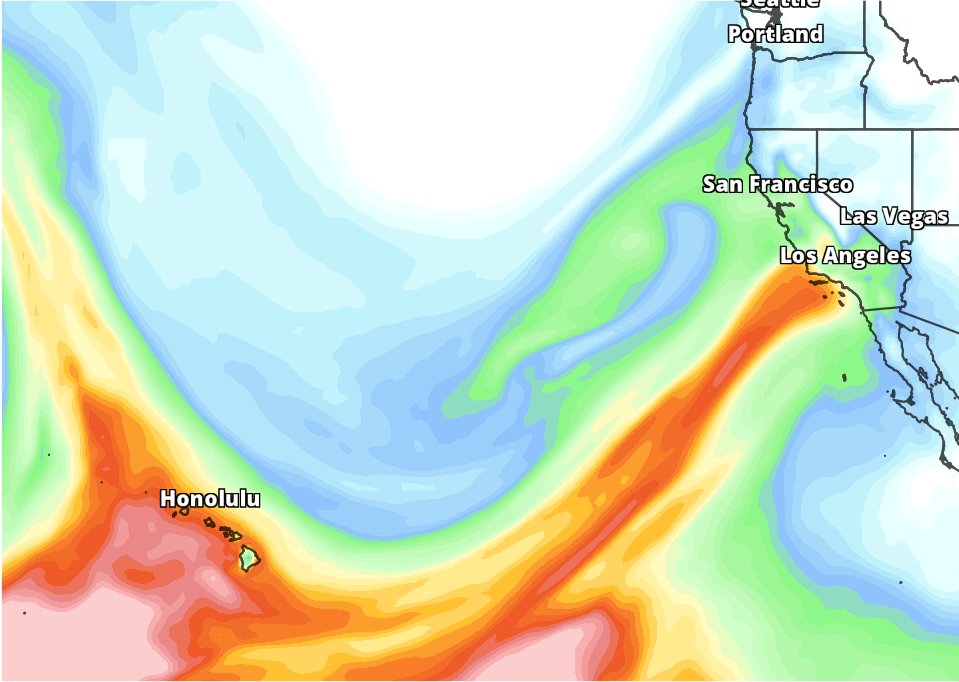
Warm humid air streaming up from the vicinity of Hawaii is making it feel
tropical outside. Heavy rain and windy conditions are still on track
tonight - Thu am. #cawx #castorm: image via NWS Bay Area @NWSBayArea, 1:10 PM 21 March 2018
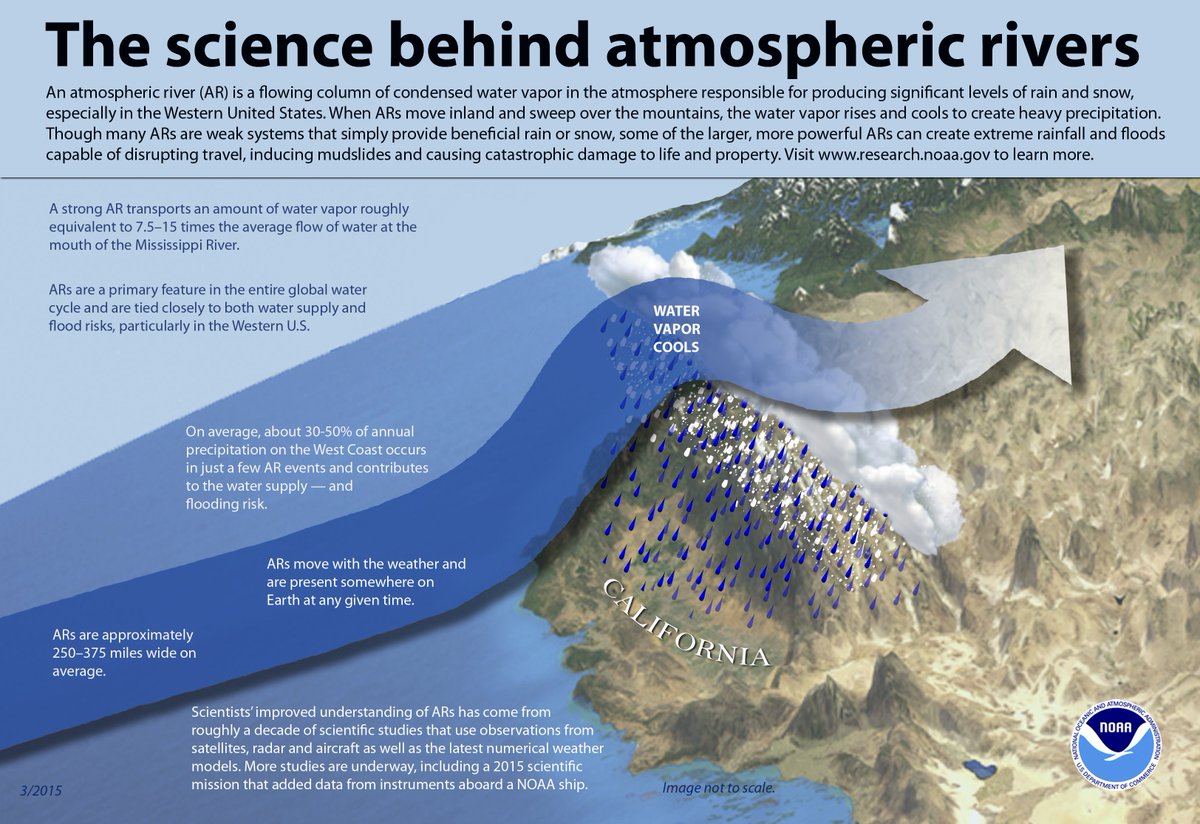
Lots of talk about #Atmospheric River - So what are Atmospheric Rivers? #PineappleExpress #cawx #castorm #AR: image via NWS Bay Area @NWSBayArea, 8:56 AM 20 March 2018

This really is a spectacular, photogenic storm. #Atmospheric River becoming entrained in warm sector of deepening cut-off low to the west, exhibiting "textbook" #PineappleExpress structure. Can't take my eyes off the satellite imagery. #CAwx #CAwater: image via Daniel Swain @Weather_West, 2:30 PM, 20 March 2018

This really is a spectacular, photogenic storm. #Atmospheric River becoming entrained in warm sector of deepening cut-off low to the west, exhibiting "textbook" #PineappleExpress structure. Can't take my eyes off the satellite imagery. #CAwx #CAwater: image via Daniel Swain @Weather_West, 2:30 PM, 20 March 2018
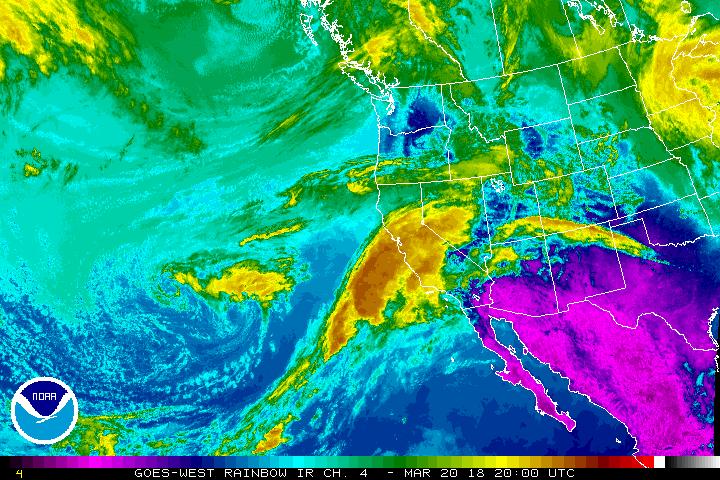
This really is a spectacular, photogenic storm. #Atmospheric River becoming entrained in warm sector of deepening cut-off low to the west, exhibiting "textbook" #PineappleExpress structure. Can't take my eyes off the satellite imagery. #CAwx #CAwater: image via Daniel Swain @Weather_West, 2:30 PM, 20 March 2018

This really is a spectacular, photogenic storm. #Atmospheric River becoming entrained in warm sector of deepening cut-off low to the west, exhibiting "textbook" #PineappleExpress structure. Can't take my eyes off the satellite imagery. #CAwx #CAwater: image via Daniel Swain @Weather_West, 2:30 PM, 20 March 2018

This really is a spectacular, photogenic storm. #Atmospheric River becoming entrained in warm sector of deepening cut-off low to the west, exhibiting "textbook" #PineappleExpress structure. Can't take my eyes off the satellite imagery. #CAwx #CAwater: image via Daniel Swain @Weather_West, 2:30 PM, 20 March 2018
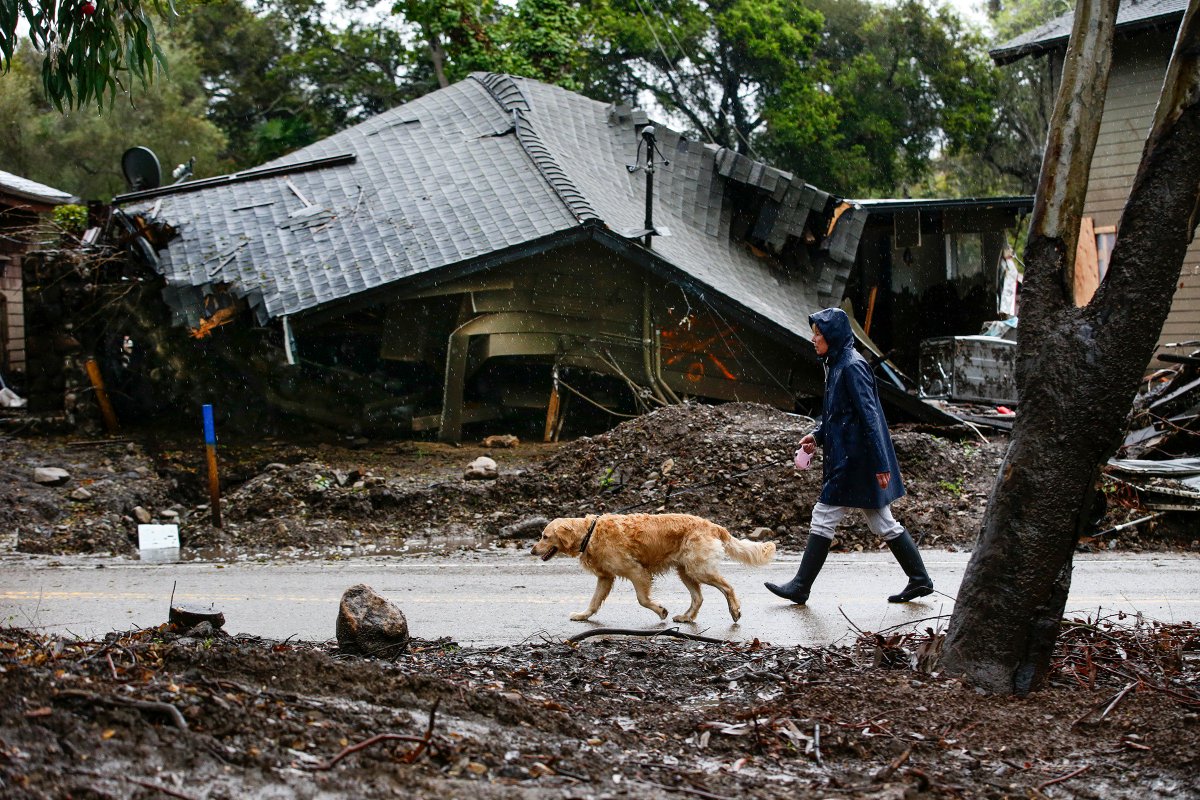
The community of #Montecito continues to absorb steady rainfall as a #PineappleExpress passes over damaged neighborhoods. @melissaetehad @latimes: image via Robert Gauthier @rgaut999, 3:56 PM 20 March 2018
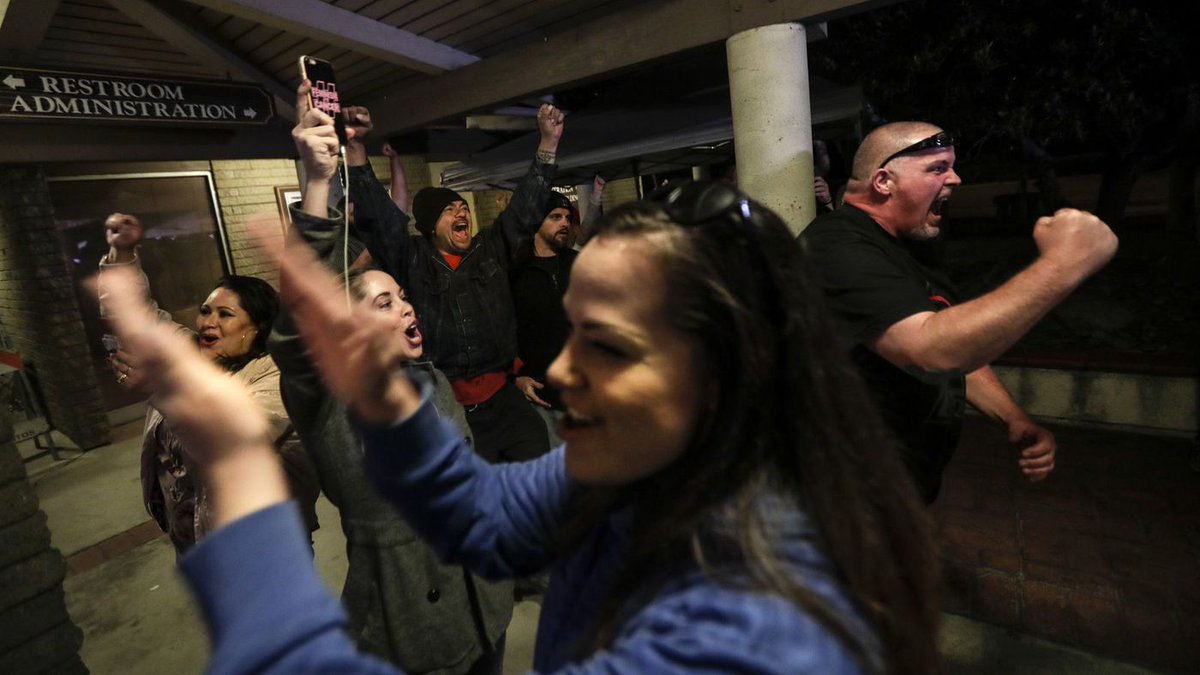
Los Alamitos wants nothing to do with California's 'sanctuary state' laws. Will it start a new resistance?: image via The Los Angeles Times @latimes, 10:40 PM 20 March 2018

It's quite clear that #Trumpism is alive and well in #LosAlamitos as the city council votes to oppose #California #SanctuaryState law. @theCindyCarcano @latimes.: image via Robert Gauthier @rgaut999, 10:18 PM 19 March 2018

All over #Montecito, some of the only people I see left in the mandatory evacuation zone are workers. “It’s because we are poorer,” Horacio Rangel told me, while putting drywall up in a new fancy pizza place. #CAstorm: image via Emily Guerin @guerinemily, 6:08 AM 21
March 2018
adventures in galaxy brain

I just poked Zuck and you should too: image via Olivia Solon @oliviasolon,
tell me about it
Replying to @oliviasolon
I can't poke him :(
I can't poke him :(
 _______ @gfors
8 hours ago
_______ @gfors
8 hours ago
Replying to @oliviasolon
ok, but you are on facebook. if you are trolling someone on their own social media platform, you are still the product. whose trolling who?
I think you can only poke if you have a mutual friend. I can report his profile to Facebook though.
Replying to @oliviasolon
Several billion dollars says he will ignore you
TIme to end this 12:00 PM 21 Mar 2018
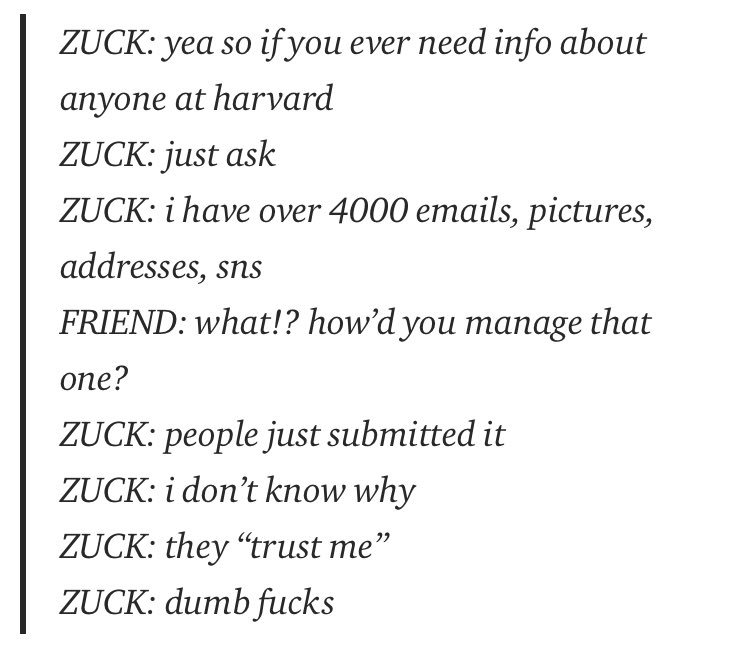
ZUCK: yea so if you ever need info about anyone at harvard
b
ZUCK: Just ask
ZUCK: I have over 4000 emails, pictures, addresses, sns
FRIEND: what!? how'd you manage that one?
ZUCK: people just submitted it
ZUCK: I don't know why
ZUCK: they "trust me"
ZUCK: dumb fucks
I think I was probably 19 when I was one of the “dumb fucks” who handed Zuckerberg my personal information without realizing the implications.: tweet via Julia Carrie Wong @juliacarriew, 17 March 2018
He’s hiding with all the other Treason Weasels.: via Joe @joemamma1, 9:48 PM, 19 March 2018

Pinochet accepting nomination, Santiago, 1988: photo by Marcelo Montecino, 19 March 2019

‘It’s time for Mark Zuckerberg to stop hiding behind his Facebook page,’ a Conservative politician said.: photo by NurPhoto/NurPhoto via Getty Images, 19 March 2018

ZUCK: yea so if you ever need info about anyone at harvard
b
ZUCK: Just ask
ZUCK: I have over 4000 emails, pictures, addresses, sns
FRIEND: what!? how'd you manage that one?
ZUCK: people just submitted it
ZUCK: I don't know why
ZUCK: they "trust me"
ZUCK: dumb fucks
I think I was probably 19 when I was one of the “dumb fucks” who handed Zuckerberg my personal information without realizing the implications.: tweet via Julia Carrie Wong @juliacarriew, 17 March 2018
He’s hiding with all the other Treason Weasels.: via Joe @joemamma1, 9:48 PM, 19 March 2018
Your miserable offspring

Pinochet accepting nomination, Santiago, 1988: photo by Marcelo Montecino, 19 March 2019

‘It’s time for Mark Zuckerberg to stop hiding behind his Facebook page,’ a Conservative politician said.: photo by NurPhoto/NurPhoto via Getty Images, 19 March 2018

The Problem with Facebook: Unrolled thread from @fchollet: François Chollet @fchollet, 21 March 2018
The problem with
Facebook is not *just* the loss of your privacy and the fact that it can
be used as a totalitarian panopticon. The more worrying issue, in my
opinion, is its use of digital information consumption as a
psychological control vector. Time for a thread.
The world is being shaped in large part by two long-time trends: first, our lives are increasingly dematerialized, consisting of consuming and generating information online, both at work and at home. Second, AI is getting ever smarter.
These two trends
overlap at the level of the algorithms that shape our digital content
consumption. Opaque social media algorithms get to decide, to an
ever-increasing extent, which articles we read, who we keep in touch
with, whose opinions we read, whose feedback we get.
Integrated over
many years of exposure, the algorithmic curation of the information we
consume gives the systems in charge considerable power over our lives,
over who we become. By moving our lives to the digital realm, we become
vulnerable to that which rules it -- AI algorithms.
If Facebook gets
to decide, over the span of many years, which news you will see (real or
fake), whose political status updates you’ll see, and who will see
yours, then Facebook is in effect in control of your political beliefs
and your worldview.
This is not quite
news, as Facebook has been known to run since at least 2013 a series of
experiments in which they were able to successfully control the moods
and decisions of unwitting users by tuning their newsfeeds’ contents, as
well as prediction user's future decisions.
In short, Facebook
can simultaneously measure everything about us, and control the
information we consume. When you have access to both perception and
action, you’re looking at an AI problem. You can start establishing an
optimization loop for human behavior. A RL loop.
A loop in which
you observe the current state of your targets and keep tuning what
information you feed them, until you start observing the opinions and
behaviors you wanted to see.
A good chunk of
the field of AI research (especially the bits that Facebook has been
investing in) is about developing algorithms to solve such optimization
problems as efficiently as possible, to close the loop and achieve full
control of the phenomenon at hand. In this case, us.
This is made all
the easier by the fact that the human mind is highly vulnerable to
simple patterns of social manipulation. While thinking about these
issues, I have compiled a short list of psychological attack patterns
that would be devastatingly effective.
Some of them have
been used for a long time in advertising (e.g. positive/negative social
reinforcement), but in a very weak, un-targeted form. From an
information security perspective, you would call these
"vulnerabilities": known exploits that can be used to take over a
system.
In the case of
the human mind, these vulnerabilities never get patched, they are just
the way we work. They’re in our DNA. They're our psychology. On a
personal level, we have no practical way to defend ourselves against
them.
The human mind is
a static, vulnerable system that will come increasingly under attack
from ever-smarter AI algorithms that will simultaneously have a complete
view of everything we do and believe, and complete control of the
information we consume.
Importantly, mass
population control -- in particular political control -- arising from
placing AI algorithms in charge of our information diet does not
necessarily require very advanced AI. You don’t need self-aware,
superintelligent AI for this to be a dire threat.
So, if mass
population control is already possible today -- in theory -- why hasn’t
the world ended yet? In short, I think it’s because we’re really bad at
AI. But that may be about to change. You see, our technical capabilities
are the bottleneck here.
Until 2015, all
ad targeting algorithms across the industry were running on mere
logistic regression. In fact, that’s still true to a large extent today
-- only the biggest players have switched to more advanced models.
It is the reason
why so many of the ads you see online seem desperately irrelevant. They
aren't that sophisticated.
Likewise, the social media bots used by hostile state actors to sway public opinion have little to no AI in them. They’re all extremely primitive. For now.
Likewise, the social media bots used by hostile state actors to sway public opinion have little to no AI in them. They’re all extremely primitive. For now.
AI has been
making fast progress in recent years, and that progress is only
beginning to get deployed in targeting algorithms and social media bots.
Deep learning has only started to make its way into newsfeeds and ad
networks around 2016. Facebook has invested massively in it.
Who knows what
will be next. It is quite striking that Facebook has been investing
enormous amounts in AI research and development, with the explicit goal
of becoming a leader in the field. What does that tell you? What do you
use AI/RL for when your product is a newsfeed?
We’re looking at a
powerful entity that builds fine-grained psychological profiles of over
two billion humans, that runs large-scale behavior manipulation
experiments, and that aims at developing the best AI technology the
world has ever seen. Personally, it really scares me.
If you work in
AI, please don't help them. Don't play their game. Don't participate in
their research ecosystem. Please show some conscience.
















9 comments:
Wooden Boy is our favourite living English poet, and would rank highly among the dead ones, were he to die tomorrow perish the pensum, and join the Dead Poets Society.
But not the Mork and Mindy Society mind. Not after all that puppy punching we heard about just moments before airtime on the morning news beam from that planet Mork and Mindy came from. I believe Keir Dullea came from there also, as the capsule neared Jupiter.
Aside, will they have to take mad puppy punching Robby's name off the tunnel that was named in his honour, the rainbow one hard by the Waldo Grade?
And who was Waldo, and who would want either a Grade, or a tunnel wreathed with exhausts and emissions, named after them, anyway, but a dead murican from an outer galaxy?
For the right price anything.
So.. we are at the moment having the Pineapple Prelude to the Deep Low and 3 Day Trough that will ensue as the cold front passes through, with its lightning, hail, thunder, car crashes, and "multiple" assholes on the freeway feeder bearing down on the pedestrian crossing much as unleashed smart missiles gone nuts. Madame B braved the broken steps and collapsing hillside and insane freeway feeder on her actual rueful final no escape golden anniversary, the poor lustrous thing more a wonder every day as she is and went to get fish. But Wooden Boy already knew that.
She reported Safeway was not only not crowded, but dead empty, as at end of world.
If only!
Al Green: Take Me To the River (live 1975)
Marvin Gaye: What's Going On | What's Happening Brother (live Chicago 27 September 1972)
Norah Jones with Puss 'n Boots joined by Neil Young for 'Down by the River' at the Bridge School Benefit #28 on 25 October 2014
btw IMHO Genius moment in the brilliant M Gaye vid 1:15 - 1:25 camera isolates MG with James Jamerson
Please Tom, no more pictures of Neil Warnock. I will expect a compensatory Slavisa Jokanovic in the next day or two
Hanf I knew that one would smoke you out of the foetid Cottage.
I'll have you know NW has been moonlighting as a public bench designer in the Wolverhampton area and it's him fashioned that wrought iron black beauty adorning the top of the page.
Now do not blame Wooden Boy, who is of Welsh lineage yet a proud Brum citizen to this very day and hour.
What's more I must add he cares not a fig about the fitba. Nor would I were it not for a chance at a bit of the Other not that being tinkered with by a member of sporting management as we hear so much of nowadays would be a desideratum really, but you know what we say, any way out of the death lock of the Championship must be a good way. Perforce.
Thanks for the post, Tom
Marvin: a voice that is is nothing less than beauty singing of our inescapable ugliness.
I'd love to pipe some of that Dhaka sewage into Zuckerberg's post-PoMo office.
James Jamerson on bass too...
Best bass player ever... and wonderful poem, a bit of living breathing overheard (inner?) dialogue from a Springtime that may or may not ever arrive... we all needed that and thank you very much for it WB. As ever, all love from us to K & yourself.
Post a Comment